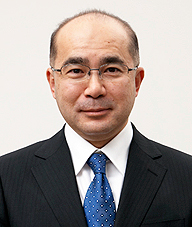Message from Director-General
|
|
August 21, 2018 Tomoyuki Higuchi
Director-General |
This is the last fiscal year that I will serve as the Director-General. I took over the post from the former Director-General, Dr. Kitagawa, in April 2011, just after the Great Eastern Japan Earthquake. Immediately after I took office, the “Big Data” era arrived, and the media began to focus on the training of people who can make decisions based on data, a cause for which the Institute has fought alone for a long time at the national level. In addition, due to the AI (Artificial Intelligence) boom for the last two or three years, statistics and mathematical science, which constitute the foundation of AI technology, have been fervently spotlighted. In the present moment, statistical mathematics benefits from the highest degree of understanding by the public over the long history of our institute, which will celebrate its 75th anniversary next year. Under these circumstances, I always felt very responsible during my seven-year term as the Director-General, but at the same time I had the opportunity to perform highly challenging work. Due to the financial situation, which has gotten harsher every year, it was difficult to say whether I could sufficiently meet expectations from people outside the organization. However, thanks to support from the research communities and the sincere cooperation of the staff of the Institute, I believe that I have adequately achieved the goals that I had when I took this post.
While I have only one year remaining in my term, we have embarked on the reform of our two main projects, the NOE (Network Of Excellence) Project and the Project for Fostering and Promoting Statistical Thinking. At the end of the fiscal year before last, we closed two NOE-type research centers, and last July we launched the Data Science Center for Creative Design and Manufacturing. Moreover, this April we set up the new Research Center for Medical and Health Data Science, with the goal of establishing structures for statistical education and research support in the national medical academia and to promote the upgrading of data science research. As I explained above, the NOE projects offer the opportunity to promote new transdisciplinary research projects while responding to current social needs by boldly restructuring the groups of our research centers.
As for the Project for Fostering and Promoting Statistical Thinking, in the last fiscal year we launched the Leading DAT (Data Analysis Talents) program, dedicated to fostering world-class data scientists, by fundamentally revising our long-renowned tutorial courses. Among the Leading DAT program, the Leading DAT Training Course is our unique attempt to conduct intensive training for a small number of people with high potential. The training consists of practical problem-solving exercises and special talks, in addition to the contents of the Leading DAT lectures. Participants who successfully complete the course will be granted a certificate of completion. In the last fiscal year the first group of more than 20 participants finished the course.
At present, in both public and private universities, a wide variety of reforms are underway to allow students to study data science systematically from the undergraduate to the Master’s level. Under these circumstances, the Institute intends to strengthen various programs targeted at postdoctoral fellows and young faculty members, with a focus on recurrent education of working technicians (researchers). We are trying to respond to the critical shortage of data scientists and AI technicians by fostering people who can ensure the implementation of data science education with proper timing.
It is essential for the institute to globalize statistical mathematics. These days, we are placing more emphasis on the enrichment of programs conducted according to the academic exchange agreements than on increasing the number of such agreements. In fact, mutual exchange of postdoctoral fellows and young faculty members, as well as joint research based on such programs, has become very active. In particular, we see the dynamic expansion of exchange with Asian countries, significantly promoted by support from URAs (University Research Administrators). In addition to promoting exchange with foreign institutions, we have made efforts to reinforce the functions of statistical mathematics, which has the effect of linking various fields and people through enhancing the diversity of faculty. To this end, we take pro-active measures such as preferentially employing young people after the retirement of senior faculty members or their departure to outside institutions, as well as actively employing women and foreigners. Consequently, the Institute is now filled with a youthful atmosphere, and we anticipate that this fresh sensibility will lead to exciting research projects. In the one year that is left to me as Director-General, I intend to contribute even more intensively to the Institute, as well as to society at large. I would appreciate your continued support.



